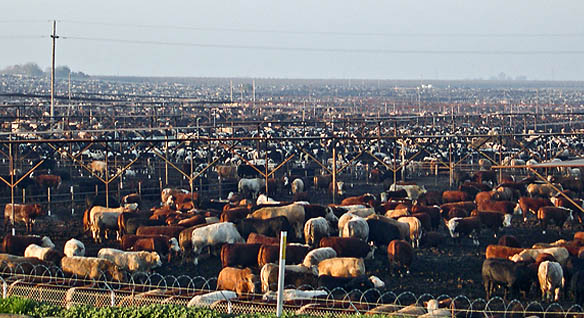
Agricultural News
Record Feeder Prices Supported by Latest Data
Mon, 19 May 2014 12:04:37 CDT

Derrell S. Peel, Oklahoma State University Extension Livestock Marketing Specialist, writes in the latest Cow-Calf Newsletter:
Last week, the Oklahoma combined auction price for 450-500 lb., Med/Large, No. 1 steers was $237.27/cwt., up 46 percent from one year ago. The price for 750-800 lb. steers was $187.32 cwt., up 43 percent for last year. Feeder cattle prices are at a record level by a large margin. Fed cattle prices have decreased slightly from highs in late March but are still about 17 percent over fed prices this time last year. Boxed beef prices have been extremely volatile and are currently down from rollercoaster highs in January, March and April. However, current boxed beef prices are roughly 17 percent over year ago levels.
Where do cattle and beef markets go from here? Feeder prices are at a significant premium to fed cattle prices and it seems unlikely that they will continue to increase. However, it is clear that feeder supplies are extremely tight and the feedlot scramble to maintain feedlot inventories will continue. The principal factor that could significantly pressure feeder markets going into summer would be a significant redevelopment of drought conditions back into areas of currently improved pasture conditions. Drought redevelopment could lead to early marketing of calves and stockers along with diversion of replacement heifers back into feeder markets. Though drought continues and has recently expanded in parts of the Southern Plains, conditions are generally better than last year.
Currently, 22 percent of U.S. pastures and ranges are rated poor or very poor compared to 33 percent this time last year. Conditions are significantly improved in the Great Plains where 21 percent of pastures and ranges are poor to very poor compared to 54 percent last year. Conditions remain severe in the Southern Plains and Western regions with 35 to 45 percent of pastures and ranges in poor to very poor condition; though both regions are in slightly better condition than this time last year. Additionally, corn planting progress accelerated significantly relieving some of the growing concerns about corn production and prices. USDA also released the May hay stocks which confirmed that hay stocks at the end of the hay crop year on May 1 were 19.2 million tons, up 35 percent from 2013 levels. Generally adequate hay supplies are supportive of herd expansion plans in many regions though hay stocks are sharply lower in some drought regions including Texas, New Mexico and California.
The latest Cattle on Feed report shows May 1 feedlot inventories down one percent year over year, the 21st consecutive month of feedlot inventory decreases. April placements were down five percent from last year, slightly lower than expected. Fed cattle prices are working lower in May and additional seasonal decreases are expected in June and July. However, fed prices may drop below $140/cwt. only briefly if boxed beef prices hold strong through the summer. April retail beef prices were once again higher at record levels. Year over year increases in U.S. beef exports along with improved middle meat values indicating that domestic demand is holding firm are supporting higher retail beef prices. Beef prices are also being supported by higher pork values and rising poultry prices. While short term volatility in cattle and beef markets means that sector margins are fluid, the fact that prices across the entire beef and cattle complex are higher suggests that the higher prices, from calves to retail beef prices, are generally sustainable at current levels. Aside from seasonal tendencies there is no immediately apparent reason for prices to decrease. Over time, additional reductions in supply will further support markets and push prices to even higher levels.
WebReadyTM Powered by WireReady® NSI
Top Agricultural News
More Headlines...




















